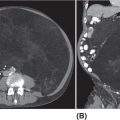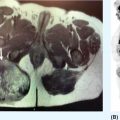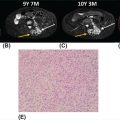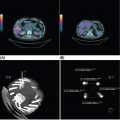36528 Immunotherapy for Sarcoma Sarcomas are mesenchymal malignancies with over 50 distinct subtypes. This diverse group of diseases interacts with the immune system in many different ways. However, it is only over the past few years that the community of sarcoma physicians and researchers has started to appreciate how the incredible diversity of sarcoma tumors may shape their responses to immunotherapy. Today, the field of immunotherapy is exploding and finally starting to observe results that may incorporate immunotherapy into the standard of care for certain sarcoma subtypes. This chapter describes promising studies and therapies, including novel combinations of checkpoint inhibitors, cellular therapies, oncoytic viral therapies, cytokine treatments, and vaccines. As the understanding of the tumor immune microenvironment continues to evolve, novel agents and therapeutic combinations will undoubtedly continue to lead to improved care for patients with sarcoma. soft tissue sarcoma, advanced sarcoma, checkpoint inhibition, programmed cell death protein 1 (PD-1), adoptive cellular therapies, vaccine therapy, tumor microenvironment, immunotherapy sarcoma immune checkpoints, immune system, immunotherapy, monoclonal antibodies, physicians, sarcomas, tumor microenvironment Antibodies, Monoclonal, Immune System, Immunotherapy, Physicians, Sarcoma, Tumor Microenvironment INTRODUCTION Sarcomas are mesenchymal malignancies with over 50 distinct subtypes; hence, it is no surprise that this diverse group of diseases interacts with the immune system in many different ways. However, it is only over the past few years that the community of sarcoma physicians and researchers has started to appreciate how the incredible diversity of sarcoma tumors may shape their responses to immunotherapy.1 Over 100 years ago, William Coley first administered streptococcal infection with therapeutic intent that successfully resulted in the spontaneous cancer regression observed in a patient with advanced sarcoma. In the 1980s, Rosenberg and colleagues at the National Cancer Institute ran pioneering trials using high doses of interleukin 2 (IL-2), observing durable disease response in a minority of melanoma and renal cell carcinoma (RCC) patients.2 The potential benefits of cellular therapies were demonstrated through the “graft vs. malignancy” effect seen following allogeneic transplantation and through the observation that tumor infiltrating lymphocytes (TIL) expanded ex vivo could induce durable tumor regression in patients with advanced and refractory melanoma.3,4 Today, the field of immunotherapy is exploding. Monoclonal antibodies targeting immune checkpoints and cell surface proteins that downregulate T-cell activation have demonstrated incredible efficacy across a range of cancer types, in most cases with an excellent toxicity profile.5–7 T cells with engineered antigen specificity have transformed the treatment of lymphoid malignancies8 and are under investigation in many solid tumors.8 Fulfilling the long-discussed promise of immunotherapy for metastatic sarcoma, we are finally starting to observe results that may incorporate immunotherapy into the standard of care for certain sarcoma subtypes. Analysis of the specific sarcoma subtypes and interactions with the tumor microenvironment have proved crucial for this evolution. However, much work remains to move these gains to the vast majority of sarcoma subtypes and to discover the optimal regimens to use them.9 NOVEL COMBINATIONS OF CHECKPOINT INHIBITORS More work is needed to characterize the response pattern of sarcoma patients using programmed death protein-1 (PD-1) and programmed death ligand-1 (PD-L1) inhibitors, but we starting to see patterns emerge. The first effort to characterize the response of soft tissue sarcoma (STS) and bone sarcoma patients to PD-1 inhibition was the SARC028 study. This single-arm, Phase II study tested the PD-1 inhibitor, pembrolizumab, in patients with refractory disease.10 The study included 40 patients with bone sarcoma and 40 with STS. Responses were mostly limited to patients with undifferentiated pleomorphic sarcoma (UPS) and dedifferentiated liposarcoma (DD LPS) along with one short-lived partial response within the synovial sarcoma (SS) cohort. No responses were seen in leiomyosarcoma (LMS) patients on the SARC028 study and this was a bit surprising as LMS often has both PD-L1 expression and T-cell infiltration. This finding was supported in a separate study of nivolimab in advanced uterine LMS, where again little activity was observed.11 Only one patient of 22 with osteosarcoma (OST) and none of the Ewing sarcoma patients responded, but one of five patients with chondrosarcoma responded. Interestingly, in one responding LMS patient, a phosphatase and tensin homolog (PTEN) mutation may have induced treatment resistance.12 Expansion cohorts were performed for UPS and DD LPS, which yielded promising results, recently reported by the American Society of Clinical Oncology (ASCO).13 In one of the biggest success stories for checkpoint inhibitors in sarcoma, the combination of pembrolizumab and axitinib has induced impressive and often durable responses in alveolar soft part 366sarcoma, including in refractory patients.14 PD-1 inhibitors are being tested in other clinical settings, including neoadjuvant, in the multicenter SARC032 study (NCT03092323). Cytotoxic T-lymphocyte associated protein-4 (CTLA-4) inhibition combined with anti-PD-1 therapy improves survival for melanoma patients, albeit with more toxicity.15 A study of CTLA-4 inhibition in SS patients showed no value for this treatment in this subtype as a single agent.16 A study combining nivolimab plus a reduced dose of ipilimumab (1 mg/kg) showed impressive clinical activity with the combination.17 Because CTLA4 and PD-1/PD-L1 modulate specific and distinct mechanisms of T-cell immunity, combined checkpoint inhibition has been pursued with even more favorable results.18–20 The Alliance A091401 trial treated patients with the PD-1 inhibitor nivolumab alone or in combination with ipilumumab to adults with advanced STS.21 Patients were randomized to monotherapy or the combined regimen with a total of 96 patients enrolled to the study. Responses were observed in 5% patients on the nivolumab arm and 16% on the nivolumab + ipilumumab arm, suggesting the possibility of benefit to the combination. Responses were observed in patients with UPS, LPS, angiosarcoma, LMS, and myxofibroid sarcoma. Combinations of PD-1 and CTLA-4 are being tested in ongoing studies for gastrointestinal stromal tumor (GIST) at University of California at Los Angeles (UCLA; NCT02880020) and all sarcomas at MD Anderson Cancer Center (NCT02815995). While these initial studies are encouraging, novel combinations will be critical for using these results to make the benefits more durable and applicable to more subtypes. Doxorubicin may achieve tumor degradation and antigen presentation with a relatively low level of lymphodepletion and a recent presentation suggested encouraging signs of activity.22 Gemcitabine may have a similar impact by modulating vasculature in addition to direct cytotoxicity (NCT03123276). A recent presentation at European Society of Medical Oncology (ESMO) suggested that sunitinib in combination with nivolimab may be effective in refractory patients (NCT03277924). Unfortunately, not all immunotherapy combinations have been successful. The combination of low-dose cyclophosphamide and pembrolizumab had great rationale as metronomic cyclophosphamide can both help treat sarcomas as well as eliminate Tregs, but unfortunately little activity was seen in the combination.23 Novel agents targeting receptors, such as B7-H3, OX40, GITR, IDO, and ICOS have not all panned out as hoped for in other cancers but may still be effective in the right combination regimens when applied to certain sarcoma subtypes.24–27 CELLULAR THERAPIES The field of cellular therapy for cancer outside transplantation began with the use of tumor-infiltrating lymphocyte (TIL) for melanoma and other tumors with some success. While the plethora of other immunotherapeutic options for melanoma has reduced interest in TIL for melanoma, the use of TIL in sarcoma is having a bit of a resurgence. Historically, we have seen studies of TIL isolation and expansion with excellent in vitro activity in the setting of multiple bone tumors.28 This work has complemented work in preclinical OST models with TIL phenotypically similar to those seen in OST tumors. More recent work suggests that state-of-the-art technique and truly fresh tumor specimen can lead to excellent rates of expansion.29,30 Now clinical trials are ongoing using TIL in the context of intensive lymphodepletion and IL-2 (NCT04052334). While these approaches remain under investigation with resurgent enthusiasm, T-cell therapy targeting the cancer testis antigens (CT antigens) MAGE-A4 and NY-ESO-1 are continuing to generate excitement. CT antigens are a family of highly immunogenic proteins expressed on a protein level in many cancers and but not in normal adult tissues apart from the testis and the trophoblast.31 In some tumor types, CT antigen expression may confer worse prognosis.32,33 Many cancer types express NY-ESO-1 and MAGE family antigens in a minority of cases and in a heterogeneous pattern. However, SS and myxoid round cell liposarcoma (MRCL) are unique as they both consistently and homogeneously express these immunotherapeutic targets. Over 80% of SS tumors express NY-ESO-1 by immunohistochemistry (IHC),34 generally with a homogeneous pattern.34 MRCL tumors almost always express NY-ESO-1 with homogeneous expression in a majority of cases.35 Endogenous cytotoxic T lymphocytes (CTLs) have been successfully produced from SS and MRCL patients following ex vivo expansion and selection in the presence of whole autologous tumor cells or tumor antigen-pulsed dendritic cells (DCs),36 but gene transfer allows for the production of T cells with uniform and consistently high-affinity TCRs. Cellular therapy targeting multiple CT antigens (NY-ESO-1, MAGE family and PRAME) using this method is being tested at Baylor University (NCT02239861). Because TCRs recognize cancer-specific peptides, which can be intracellular, they must be recognized in the context of major histocompatibility complexes (MHC), which means they must be matched 367to patients with specific HLA types. HLA-A0201 is among the most common HLA types, expressed by 20% to 40% of the Caucasian population. Multiple investigators conducted clinical trials engineering T cells to target the 157–165 CD8 T-cell epitope of NY-ESO-1, which is presented by HLA-A*02:01.37 Objective responses were observed in a majority of patients following cellular therapy targeting NY-ESO-1, demonstrating that NY-ESO-1 is an excellent target for these tumor types.38,39 In a pilot study testing a high affinity, NY-ESO-1-specific T-cell receptor (TCR), responses were seen in the majority of patients.38,39 More recent studies have only improved on those original results and also underscored the importance of lymphodepletion as part of the conditioning for these patients.40 Much work remains to be done to improve on these results as the responses patients have are rarely durable. UCLA has been investigating combinations with dendritic cell vaccination41 and CTLA-4 inhibition. CT antigen targets other than NY-ESO-1 may make this more successful; MAGE-A4 remains an extremely promising target, and high response rates were reported in early trials.42 More recently, the dramatic successes of T cells engineered to express chimeric antigen receptors (CARs) targeting lymphoid malignancies have generated a desire to apply these approaches to solid tumors and sarcoma in particular.43 It is important to recognize that CAR T cells have a number of important differences from TCR-engineered T cells. These receptors recognize their target with the scFv portion of an antibody bound to a costimulatory domain (CD28 or 41BB) and a CD3ζ chain of the TCR so they can recognize cell surface, membrane bound proteins in a way that is HLA-independent. Identification of CAR targets is challenging, but there are some exciting emerging possibilities. CAR T-cells targeting Her-2 were used for patients with OST and epithelioid sarcoma (ES) resulting in tumor necrosis,44 and novel approaches may further enhance these responses.45 B7-H3, along with possibly G2D, may be a particularly exciting target,46 and it is currently in clinical trials ongoing now (NCT00902044, NCT02107963, NCT01953900). MANIPULATING THE SARCOMA IMMUNE MICROENVIRONMENT A plethora of studies have analyzed PD-L1, PD-1, and other immune-related biomarkers in sarcoma tumors. One of the earliest of these reports examined 105 sarcoma tumors, including specimens from a diverse group of subtypes.47 PD-1 expressing TIL and PD-L1 expression on tumor cells was observed in 65% and 58% of cases. Both PD-1 and PD-L1 expression were associated with both higher tumor grade and advanced stage, and were independent prognostic indicators for OST and progression-free survival (PFS). A later study of 50 STS patients with a broad mix of subtypes found lower levels of PD-1 and PD-L1 expression emphasizing that it is difficult to generate broad characterization of sarcomas because the expression of these immune markers varies so much from subtype to subtype.17 Another study used the nanostring gene expression platform with a focus on UPS, LMS, SS, and liposarcoma subtypes, and found that UPS had high levels of genes related to antigen presentation and T-cell infiltration. SS and MRCL tumors showed significantly lower expression of such genes including low levels of the MHC/HLA that are essential for antigen recognition by T cells as well as the of genes associated with T-cell infiltration, such as the IL-7 receptor-encoding (IL-7R) gene.48 These patterns of expression appeared to also apply to expression of PD-L1 on tumor and PD-1 on infiltrating T cells, with the levels of expression highly correlated to T-cell infiltration and expression of genes related to antigen presentation. The very low levels of T-cell infiltration, MHC expression, and expression of PD-L1 suggest an overall “quiet” or “cold” tumor immune microenvironment in STS. However, a phase 0 trial suggested that interferon gamma may be able to transform this into a “hot” environment as evidenced by increased T-cell infiltration and MHC expression; however, this regimen also resulted in the upregulation of PD-L1 in tumors.49 An ongoing National Cancer Institute (NCI)-sponsored Phase 2 trial of pembrolizumab in combination with interferon gamma-1b has recently been amended to include metastatic and unresectable SS and MRCL (NCT03063632). Other investigators have sought alternative strategies for manipulating the sarcoma immune microenvironment. Macrophages are myeloid derived cells that play a crucial role in manipulating the tumor immune microenviroment and have a critical prognostic importance for LMS patients50–52 but may also play an important role for many other types of sarcoma.53,54 These monocyte-derived cells can shift phenotype and function on a spectrum between the inflammatory M1 phenotype, which secretes IL-12 and has high class II MHC expression, and the M2 phenotype, which plays a role in wound healing and secretes inhibitory cytokines including IL-10 and transforming growth factor beta (TGFβ).55 Pexidartinib is tyrosine kinase inhibitor (TKI) selective for the colony-stimulating factor 1 receptor (CSF1R) kinase, recently Food and Drug Administration (FDA) approved for the treatment of tenosynovial giant cell 368tumor based on marked clinical activity.56 CSF1R (also known as CD115) is a classic marker for immune inhibitory macrophages, and inhibiting this receptor could play an important role in combination immunotherapies. A Phase I study combining pexidartinib and sirolimus is recruiting patients with advanced sarcomas (NCT02584647).57 A number of groups have attempted to target macrophages through targeting CD47.58 Trabectedin is part of standard of care treatment for sarcoma and also has potent antimacrophage activity,59,60 and trials combining trabectedin and checkpoint inhibitors are also ongoing (NCT03074318, NCT03138161). Manipulation of the tumor microenvironment with other agents, including a Toll-like receptor (TLR) agonist, may induce a globally inflamed environment including conversion of tumor-associated macrophages (TAMs) from M2 to M1, and trials are ongoing to attempt to exploit this effect.61 OTHER PROMISING STRATEGIES Oncoytic Viral Therapies Oncolytic viruses are attenuated or engineered viruses that either have direct cytolytic activity in tumors with at least some tumor specificity and targeting and/or operate by attracting an inflammatory antitumor immune response into the tumor that can then fight cancer systemically.62,63 A wide variety of viral vectors have been gaining traction with encouraging activity against a variety of tumors.64 Talimogene laherparepvec (Tvec) is a modified herpes simplex-1 virus engineer express GM-CSF (granulocyte macrophage colony-stimulating factor) that has been FDA approved as a treatment for melanoma and works better in combination with checkpoint inhibition.65 Because STS can be superficial and injectable at the bedside, there has been some interest in finding applications for Tvec in this space. There is some evidence it may have applicability for other solid tumors.66 Because sarcomas are often large and difficult to resect, the University of Iowa has been exploring its use in the localized setting both alone and with checkpoint blockade (NCT02453191). Memorial Sloan Kettering Cancer Center (MSKCC) investigated the use of Tvec along with pembrolizumab in 20 patients with metastatic sarcoma who had injectable lesions and reported responses in four, suggesting that this might be an area for further investigation.67 Combinations with other immunotherapies, chemotherapy, and radiation may further potentiate responses. Preclinical activity using other oncolytic viral therapies has been demonstrated in a variety of models and this is will undoubtedly be an active area of future research.68–70 Cytokine Treatments Cytokine formulations, such as pegylated IL-2,71 may work well in combination with checkpoint strategies. IL-15 may be a key cytokine for future studies and novel formulations and compounds could potentially make this active either as a single agent or a part of a combination.72 Delivery remains a challenge for IL-12 therapy but multiple investigators are working to bring novel formulations to the clinic.73 Vaccines The field of sarcoma, like many fields in oncology, has a frustrating history with vaccines. These treatments work by stimulating the endogenous antitumor immune response. One of the most prominent disappointments for the field was a placebo-controlled, multicenter trial that tested a trivalent peptide vaccine against multiple ganglioside antigens. Vaccinologists have long suspected that peptide-induced vaccine responses can be slow in onset, so the trial focused on patients with no evidence of disease following metastectomy in a placebo-controlled, multicenter trial.74 Although more serologic responses were seen following vaccination, there was no significant difference in PFS between trial arms. A pilot study using peptides spanning the SYT–SSX fusion in SS patients resulted in one transient response.75 There is a long history of using vaccines to induce responses against cancer testis antigens with some success at inducing immune responses with potential evidence of clinical activity.76 LV305 was an integration-deficient lentiviral vector that selectively targeted CD20977–79 on DCs and was able to induce strong T-cell responses in trials targeting NY-ESO-1 in SS and MRCL patients.80,81 Phase I/II studies of this vaccine showed impressive results with 1-year overall survival (OS) of 82%.82 Combining this vaccine with a TLR4 agonist and protein vaccine (NCT02387125) resulted in an even deeper induction of antibody and CD4+ T-cell responses83 and may have worked even better in combination with a PD-L1 inhibitor.84 However, weak activity and logistical issues with a complicated trial design led to an abandonment of a pivotal Phase III trial. DC were also targeted in another vaccine trial that included an NY-ESO-1 protein bound to CD205, which did appear to have immunologic activity in some sarcoma patients; however, this therapy is no longer in development.85 369Regardless, there are a number of promising strategies that may still have activity in the optimal regimen and clinical setting. A number of different trials have attempted to use DC vaccines pulsed with autologous tumor proteins, tumor lysate, or tumor-specific peptides with varying degrees of success.86–88 Other strategies using autologous tumor have engineered tumor cells for increased immunogenicity. DC pulsed with sarcoma tumor lysate and other tumor-specific targets are being examined in combination with gemcitabine and in other regimens (NCT01803152; NCT03034304). The Vigil trial is an ongoing study in Ewing sarcoma patients receiving second-line chemotherapy (NCT03495921). This trial uses autologous tumor that has been engineered to express GM-CSF and to inhibit production of Furin, an enzyme that activated TGFβ.89 SUMMARY Immunotherapy has transformed the treatment of many cancers leading to longer lives for countless patients with improved quality of life. In sarcoma, these advances have been slower, but we are finally making progress. We have started to identify areas where anti-PD-1 therapy can be incorporated into the standard of care, and T cells engineered to recognize HLA-restricted epitopes of cancer testis antigens are likely to become used more widely. As our understanding of the tumor immune microenvironment continues to evolve, novel agents and therapeutic combinations will undoubtedly continue to lead to improved care for patients with sarcoma.
Immunotherapy for Sarcoma
Catherine M. Albert and Seth M. Pollack









